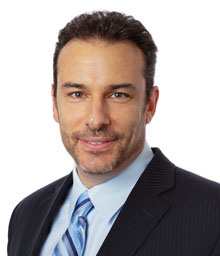- Home
- Our Firm
- Practice Areas
- Bicycle Accidents
- New York City Car Accident Lawyer
- New York City Car Accident Checklist
- New York City Car Accident Insurance Lawyer
- New York City Common Car Accident Injuries
- New York City Common Causes of Car Accidents
- Aggressive Driving
- New York City Distracted Driving Lawyer
- New York City Fatigued Driver Lawyer
- Drunk Driving
- New York City Reckless Driving Accident Lawyer
- New York City Road Construction Accident Lawyer
- New York City Texting While Driving Lawyer
- Traffic Signal Rules
- Vehicle Defects
- New York City Weather and Road Condition Lawyer
- New York Car Accident Fault Laws
- New York City Types of Car Accidents
- Hit-and-Run Accident
- Fatal Car Accident
- Maximum Compensation for Car Accident
- New York City Multi-Vehicle Accident Lawyer
- New York City Rear-End Accident Lawyer
- Speeding Accident
- Construction Accidents
- Amputations & Limb Loss
- Burns and Construction Accidents
- Construction Wrongful Death
- Crane and Vehicular Accidents
- Construction Negligence
- Construction Slip and Fall Accidents
- Construction Accident Legal Guide
- Construction Site Safety Code
- Cranes & Derricks Safety Standards
- Excavation Safety Standards
- Fall Protection Standards
- General Construction Safety and Health Standards
- High-Risk Construction Oversight
- New York Labor Laws
- New Protocols for Existing and New Concrete-Embedded Fall Arresting Systems
- Personal Protective and Life Saving Equipment Standards
- Scaffold & Sidewalk Shed Safety
- Scaffold Safety Standards
- Steel Construction Safety Standards
- Construction Zone Accidents
- Dangerous Construction Trades & Professions
- Electrocution Accidents
- Eye Injury
- Failure to Provide Safety Equipment
- Falling Objects Injuries
- Falls from Elevated Work Surfaces
- Fracture Injury
- Forklift Accidents
- Knee & Ankle Injuries
- Knee & Shoulder Injury
- Heavy Equipment Accidents
- Spinal Cord Injury
- Scaffolding Accidents
- Paralysis Injury
- PTSD and Construction Accidents
- Toxic Exposure Injury
- Trench Collapse Accidents
- Traumatic Brain Injury
- Undocumented Construction Worker Injuries
- Workplace Construction FAQ’s
- Dog Bite
- E-Bike Accident
- Lead Poisoning
- Motorcycle Accidents
- Onewheel Accident
- Pedestrian Accidents
- Personal Injury
- New York City Premises Liability Lawyer
- Rideshare Accident
- Slip and Fall
- Airport Falls
- Cluttered Aisle Falls
- Cracked or Damaged Floor Tiles
- Common Injuries
- Elevator and Escalator Falls
- Exposed Cords or Wires
- Grocery Store Falls
- Aldi Grocery Store Slip And Fall
- Associated Supermarkets
- Big Deal Supermarket
- CTown Supermarkets
- Compare Foods Supermarket
- Good N’ Natural Organic Market
- Fairway Market
- Fine Fare Supermarkets
- Food Bazaar Supermarket
- Gristedes Supermarkets
- Key Food Stores
- Met Foodmarkets
- Pioneer Supermarkets
- Shop Fair Supermarket
- Shoprite Of Gateway Center
- Stop & Shop
- Superfresh Store
- Trader Joe’s
- Wegmans
- Western Beef Supermarket
- Whole Foods
- Ice Slip and Falls
- Inadequate Lighting Accidents
- Inadequate or Missing Warning Signs Slip and Fall
- Leaves or Debris on Walkways
- Loose or Missing Handrails
- Loose and Uneven Flooring
- Missing Floor Mats Or Runners
- NY Property Owner Responsibility
- Parking Lot & Sidewalk Falls
- Potholes Slip and Fall
- Public Park Falls
- Public Transportation Falls
- Sudden Changes in Floor Elevation
- Snowstorm Falls
- Stairway Falls
- Slip and Fall Legal Guide
- Slip And Fall Settlements
- Slip And Fall FAQs
- Slippery Floors Accidents
- Statute of Limitations
- Transitions from One Type of Floor to Another
- Torn Carpet Slip and Falls
- New York City Pregnant Slip and Fall Lawyer
- While Visiting New York
- Why Are Slip and Fall Cases So Hard to Win?
- Workplace Falls
- Trip and Fall
- Truck Accidents
- Traumatic Brain Injury
- Wrongful Death
- See All Legal Services
- Cities We Serve
- Client Testimonials
- Contact Us
- Blog
- FREE CASE EVALUATION (212) 279-2000
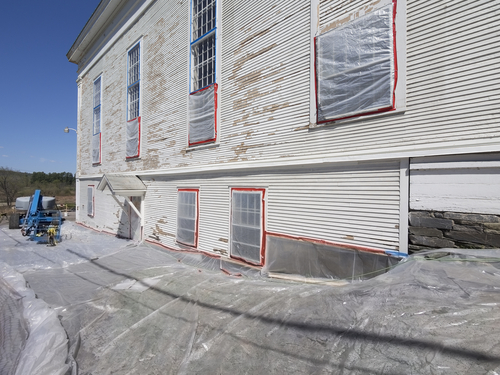
A New Parent’s Guide to Household Safety in New York City
Bringing home a baby is a joyous occasion. But for new parents, it can also be a little scary. One of your primary duties is to keep your newborn safe, and a household is filled with potential dangers.
No doubt you’ve already thought about some of these safety hazards. But the baby and toddler years tend to whiz by in a blur. Amid the mental fog that comes from countless late-night feedings and diaper changes, it’s surprisingly easy to overlook some important things that will keep your baby healthy and safe in your home.
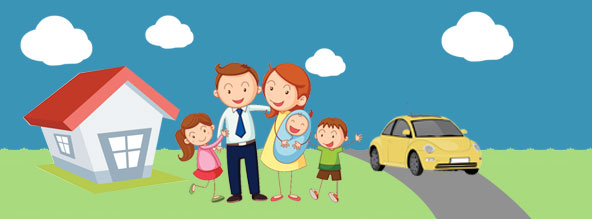
Many steps of childproofing are universal regardless of where you live, and others are especially important in New York City. But where should you start? Consider these before bringing home baby.

Lead Paint
According to the state Department of Health, New York has the largest percentage of older housing in the nation. Lead is a toxic metal that was often used in household paint until it was banned in the late 1970s.
Old paint that chips, flakes or peels can produce dust that can settle on floors, window sills, toys and cribs. If a child ingests or inhales lead dust, it may result in poisoning that could impair his or her growth, behavior and ability to learn.
If you rent housing in New York City, Local Law 1 requires landlords to identify and fix lead paint problems in properties with children under age 6 living there. They are also required to test for lead hazards if the building has three or more apartments or was built before 1960 (or between 1960 and 1978, if the owner knows it has lead paint). Apartments with young children must be inspected every year for lead hazards, and tenants are entitled to copies of results of clearance dust wipe tests once repairs are made.
To reduce the risk of lead poisoning, parents should:
- Wash hands, window sills, toys and pacifiers often.
- Mop floors regularly.
- Make sure their child is tested for unhealthy levels of lead at ages 1 and 2.
If you have a lead paint complaint or concern and your landlord hasn’t responded, call 311 or visit 311ONLINE and the Health Department will assist you. Or, call the New York Department of Housing, Preservation and Development Central Complaint Bureau at (212) 824-4328.
Window Guards
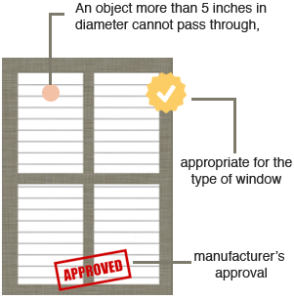 High-rise apartment buildings can be deadly for children, whose natural curiosity will draw them to windows. In New York City, window guards are required for apartments if a child under age 10 lives there. However, landlords also must install window guards upon a tenant’s request regardless of whether a child resides in the home.
High-rise apartment buildings can be deadly for children, whose natural curiosity will draw them to windows. In New York City, window guards are required for apartments if a child under age 10 lives there. However, landlords also must install window guards upon a tenant’s request regardless of whether a child resides in the home.
If a child will be in daycare at someone else’s home, parents should make sure all windows are equipped with window guards that have been approved by the Department of Health and Mental Hygiene.
Window guards are installed properly and approved when:
- An object more than 5 inches in diameter cannot pass through, over or under the guard.
- They have the manufacturer’s approval number imprinted on a vertical stile of the guard.
- The window guards are appropriate for the type of window they are being installed on.
Remember that any other homes where children are likely to visit – such as Grandma and Grandpa’s –also should be equipped with window guards.
Additional Landlord Responsibilities
Beyond lead inspections and window guards, landlords have a basic duty to provide tenants with apartments that are livable, safe and sanitary. That means that buildings must be maintained and cleared of any garbage or vermin.
Other obligations include:
- Providing approved smoke detectors within 10 feet of every room used for sleeping.
- Installing an approved carbon monoxide detector within 15 feet of the primary entrance to each sleeping room.
Learn more about your rights by reading the New York Attorney General’s Tenant’s Rights Guide.
Buying the Safest Car Seat
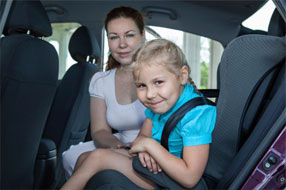 A child safety seat is required in New York, but it takes more than buying one and putting it in the car to comply with the law. They must be installed correctly and for the proper age and weight requirements set by law and also according to manufacturer specifications.
A child safety seat is required in New York, but it takes more than buying one and putting it in the car to comply with the law. They must be installed correctly and for the proper age and weight requirements set by law and also according to manufacturer specifications.
A New York State Police survey found that the misuse rates of child safety seats is greater than 90 percent. To prevent mistakes or mishaps, you should:
- Verify that your child seat is properly installed by visiting a certified child passenger safety technician in your area.
- Check with the Consumer Product Safety Commission (CPSC) to learn about car seat recalls, especially if you are buying a secondhand one.
- Refer to the Consumer Reports Car Seat Buying Guide for recommendations and tips.

Best Way to Childproof? Start Crawling.
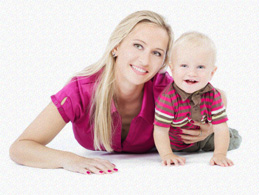 Experts suggest the best way to assess your childproofing needs is to start crawling. Get down on your hands and knees and look around the house for anything that looks tempting, such as:
Experts suggest the best way to assess your childproofing needs is to start crawling. Get down on your hands and knees and look around the house for anything that looks tempting, such as:
- Electrical outlets: Traditional outlet guards may present a choking hazard if little fingers manage to pry them out, so consider those with horizontally sliding doors. One example is the Safety 1st Swivel outlet cover.
- Cabinet locks: Lock down all cabinets where cleaners, chemicals, medications, kitchen knives, weapons and other dangerous items are kept. Retailers sell a variety of lock options to account for the various types of cabinet hardware in homes. Buy ones that automatically re-lock upon closing.
- Doorknob covers: As soon as baby starts crawling, cover doorknobs in any location where he or she could get into trouble. Doors opening outside or into the bathroom are particularly important.
- Cord covers or cord shorteners: Prevent strangulation by getting covers for cords on window treatments or the floor. Cord covers can be easily installed to keep them out of sight, and you can buy shorteners that remove the slack on a cord. Also make sure that any corded devices – such as baby monitors – are kept far away from the crib.
- Baby gates: A recent study found that the number of children injured in baby gate accidents is on the rise. Generally speaking, you will have the choice to buy pressure-mounted gates or those that attach to the wall with hardware. Hardware-mounted gates are critical for the tops of stairways because they will be able to withstand more weight if baby leans on it or tries to stand up. Pressure-mounted gates are better used to block off rooms. Consumer Reports provides a good assessment of what to look for in a baby gate here.
- Furniture wall straps: Tragic stories of furniture and TVs falling onto toddlers are all too frequent in the U.S. Experts recommend strapping down anything taller than 30 inches, and to make sure the straps are affixed to a stud in the wall.
- Oven locks: Teach your child to stay away from hot kitchen appliances, but don’t count on them to listen.
- Toilet locks: Babies can drown in as little as one inch of water.
Every parent will likely make some baby-proofing slipups. Just like your child, your childproofing needs will grow. It’s important to prepare your household for when your baby comes home, but also to do periodic checkups as the baby gets more mobile.
Prevent Poisoning in Young Children
Poisoning is every parent’s nightmare. Unfortunately, homes are filled with potentially poisonous materials.
The following is a general list of toxic items commonly found in homes. Lock them up or store them high on shelves out of children’s reach.
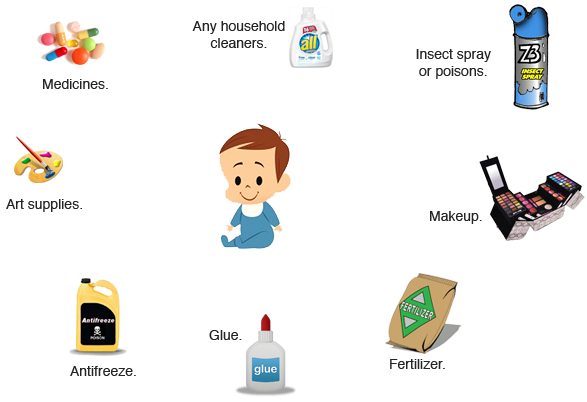
Plants: People tend to overlook that plants can be very dangerous if eaten by children. Make sure you know the common name of your plants, but also the Latin name. Poison control officials won’t be able to identify a toxic plant by your description over the phone. Common household plants that can be dangerous to kids include those in the poinsettia, philodendron and tomato families.
Keep the number for Poison Control by every phone in your house. If you suspect your child is poisoned but is conscious and responsive, don’t induce vomiting right away. Call the Poison Help Line at (800) 222-1222 or locally at (212) 764-7667. If he or she is unconscious or having a seizure, call 911 immediately.
Enjoy the Toys, Just Be Careful
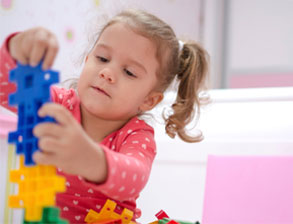 One of the best parts of being a parent is getting to play with toys again – and they’re probably a lot cooler than what you had growing up! But be cautious.
One of the best parts of being a parent is getting to play with toys again – and they’re probably a lot cooler than what you had growing up! But be cautious.
An estimated 265,000 children were treated in emergency rooms for toy-related injuries in 2012, and 34 percent of those kids were younger than 5.
Tragically, 11 children died from toy-related accidents, including one 6-month-old.
In general, the most dangerous toys for young children tend to be:
- Tricycles.
- Stuffed animals.
- Riding toys, such as non-motorized scooters and play vehicles.
- Balls.
- Toys with small parts.
However, countless other toys also present hazards – and some of the dangers are invisible. Lead paint is one example. Although using lead paint on toys is banned in the U.S., many other countries still use it, making imported toys a possible hazard.
However, lead is not banned in plastics. Plastic can break down when exposed to sunlight, air or cleaners – all of which can produce harmful lead dust. Unfortunately, do-it-yourself lead testing kits are unreliable for parents. To limit dangers, check for recalls regularly. You can also keep current on all consumer recalls by signing up for an e-mail alert.
In Case of Fire, Be Prepared
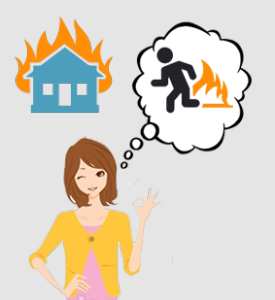 In New York, fire-related injuries are the third leading cause of death for children under 4.
In New York, fire-related injuries are the third leading cause of death for children under 4.
Disturbingly, half of all house fires occur when most of us are sleeping – between 10 p.m. and 6 a.m. Even worse, children under 5 are twice as likely to die in fires compared to everybody else.
Having functional smoke detectors in your home is crucial, but not enough, according to the New York City Fire Department.
You need to develop an escape plan so that when a fire emergency starts, you know exactly what to do. It’s important to do routine drills to keep the plan fresh in your mind.
As your child gets older, he or she will also have to learn the plan. But with infants and toddlers, there are other ways to be prepared:
- Read the label on pajamas to make sure they are flame-resistant.
- Close your child’s bedroom door at night. The closed door will make it more difficult for smoke to penetrate the room if a hallway fire occurs.
- Keep a baby harness near the crib. That way, you can carry your infant out of the house while leaving your hands free.
- Teach children not to be afraid of firefighters or people in uniforms. Many kids will hide under beds or in closets out of fear of emergency responders.
Other things to check:
- If your fire escape window has security bars, make sure it is FDNY-approved.
- Make sure that all security bars that block outside entry have quick-release functions, and teach everyone who is age-appropriate how to open them.
- Test smoke alarms monthly and have them on each floor of the home, outside sleeping areas and in each bedroom. Replace every 10 years.
- Keep all escape routes free from toys and debris.
Putting Baby to Bed Safely
For infants (children age 1 and under) in New York City, the largest number of injury-related deaths are caused by unsafe sleep practices. While the exact causes of many of these tragic deaths are unknown, there are some environmental factors in the home that are linked to sleep-related deaths. They include:
Young infants are most at risk for sleep-related injuries that cause death, as are premature babies and babies born to very young mothers.
As the parent of a newborn, there are number of steps you can take to make your home a safe place for your baby to sleep. These include:
- Always position your baby to sleep on his or her back, even if it is just for a short nap.
- Babies should sleep alone in a safe crib, not in an adult bed.
- Make sure your baby’s mattress is firm and the bedding fits tightly.
- Keep toys out of your infant’s crib while the baby is sleeping.
Important Phone Numbers
Emergencies: 911
Non-emergencies: 311
Poison control: (212) 764-7667 or (800) 222-1222
Lead paint concerns:
New York Department of Housing, Preservation and Development Central Complaint Bureau at (212) 824-4328.
Car seat fitting and inspection centers:
- New York Department of Transportation Safety Programs: (212) 839-4750. By appointment only.
- The Car Seat Lady: Alisa Baer for the West Village at (646) 206-1918; Emily Levine for Upper West Side at (917) 579-9397. Both by appointment only.
Additional Resources:
- New York City Fire Department
- New York Police Department
- New York City Department of Health and Mental Hygiene
- Safe Kids New York State
- NYC.gov
- Consumer Product Safety Commission
- National Safety Council
- Safe Kids Worldwide
- Children’s Safety Network
- Fireproof Children
- Prevention 1st
- Toy Industry Association
- Safe Routes to School National Partnership
- Centers for Disease Control and Prevention Safe Child Initiative
- Child Care Aware
What Our Clients Say
RECENT NYC SLIP & FALL LAWSUIT VERDICTS
$2 MILLION
Fractured Leg
$1.9 MILLION
Car Accident Settlement
$1.75 MILLION
Slip And Fall Settlement
LATEST BLOG POSTS
November 28, 2024
Trip and Fall Accidents on NYC Construction Sites: Who Can Be Held Liable?
Construction sites are among the most hazardous environments in New York City, often riddled with uneven surfaces, debris, and other…
November 21, 2024
Proving Negligence in New York Slip and Fall Injury Claims: What You Need to Know
Slip and fall accidents can happen instantly but leave lasting physical, emotional, and financial impacts. For victims in New York, successfully…
November 14, 2024
How Long Does It Take to Settle a Slip and Fall Case in NYC?
Slip and fall accidents can result in serious injuries, costly medical bills, and unexpected disruptions to your life. If you’ve been…
Get In Touch
Get Your Free Consultation✖





